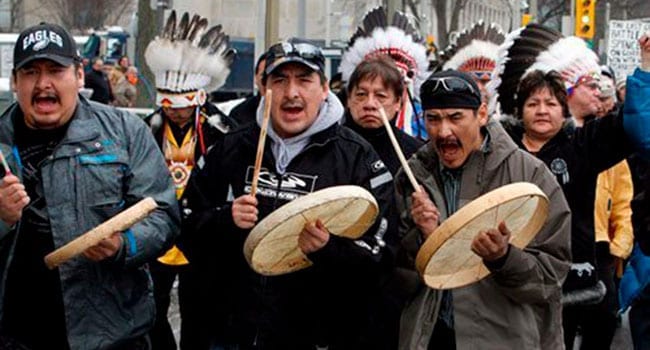 As tensions have mounted in Canada in recent months over land claims and Indigenous rights, I’ve heard and read many variations of the phrase, “The Indigenous just need to get over it.”
As tensions have mounted in Canada in recent months over land claims and Indigenous rights, I’ve heard and read many variations of the phrase, “The Indigenous just need to get over it.”
I wonder if the people who embrace this view really know what they’re saying. It reflects complete ignorance of the history of Canada and the world.
The bottom line is that Canada is guilty of genocide. Telling our Indigenous people to “get over it” comes dangerously close to outright genocide denial.
For thousands of years, genocidal practices were standard operating procedure for powerful empires. The Romans, for example, literally wiped Carthage off the map.
It wasn’t until the 20th century that we began to question these policies, especially in the aftermath of the Holocaust.
In 1948, primarily through the efforts of Raphael Lemkin, a Polish Jewish lawyer and scholar who lost many family members in the Holocaust, the United Nations passed the Genocide Convention. It states:
“In the present Convention, genocide means any of the following acts committed with intent to destroy, in whole or in part, a national, ethnical, racial or religious group, as such:
- Killing members of the group;
- Causing serious bodily or mental harm to members of the group;
- Deliberately inflicting on the group conditions of life calculated to bring about its physical destruction in whole or in part;
- Imposing measures intended to prevent births within the group;
- Forcibly transferring children of the group to another group.”
It’s well known that the residential schools in Canada forcibly transferred children of one group to another group.
It’s less well known that the Indian Act demonstrated clear intention to force assimilation of our Indigenous population.
In addition, the Canadian government not only knew that high percentages (24 per cent on average) of Indigenous children were dying in these schools in the early 20th century, it chose to ignore the advice of health inspector Dr. Peter Bryce to improve conditions.
In response to Bryce’s report, the deputy superintendent of the Department of Indian Affairs, Duncan Campbell Scott, stated, “It is readily acknowledged that Indian children lose their natural resistance to illness by habituating so closely in these schools, and that they die at a much higher rate than in their villages. But this alone does not justify a change in the policy of this Department, which is geared towards the final solution of our Indian Problem.”
In recent decades it has also become well known that crimes of genocide leave deep wounds on individuals and communities, especially when they’re inflicted on children.
You don’t “just get over” serious trauma. Trauma inflicted on a child ultimately impacts their ability to parent. In other words, the trauma is intergenerational. We will be dealing with the impact of residential schools in Canada for many years to come.
Some will argue that these crimes against humanity have nothing to do with them, so why should they care. After all, they weren’t part of the residential school system.
I simply can’t embrace this point of view. My deep love for Canada means I must embrace my country’s history, the good and the bad. It also means I must do all I can to make Canada better.
Very few countries have had the courage to do what Canada is doing. Our way forward, however, isn’t always clear. That’s why the Truth and Reconciliation Commission was formed.
As I study the commission’s 94 calls to action, I can see how they provide direction as we attempt to heal our national psyche.
Things won’t get better if we try to ignore our history. Humans don’t just “get over” abuse and trauma. And to deny these truths is to pour salt into the already deep wounds of genocide in Canada.
Troy Media columnist Gerry Chidiac is an award-winning high school teacher specializing in languages, genocide studies and work with at-risk students.
The views, opinions and positions expressed by columnists and contributors are the author’s alone. They do not inherently or expressly reflect the views, opinions and/or positions of our publication.


